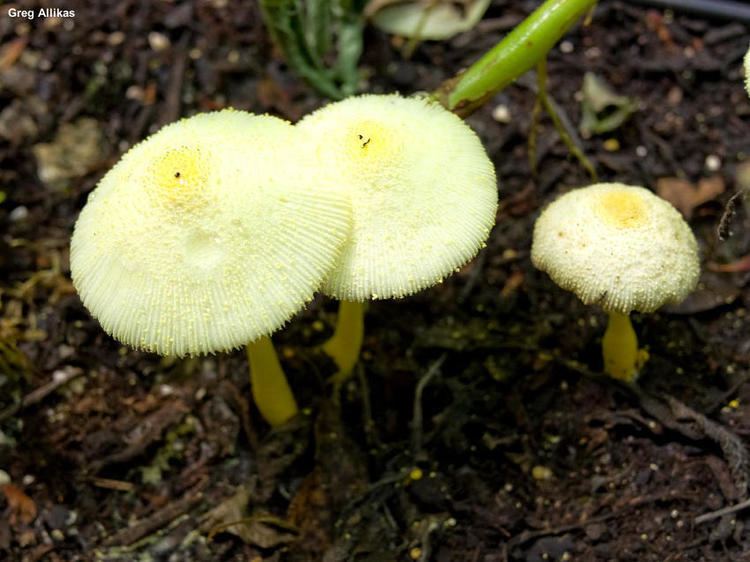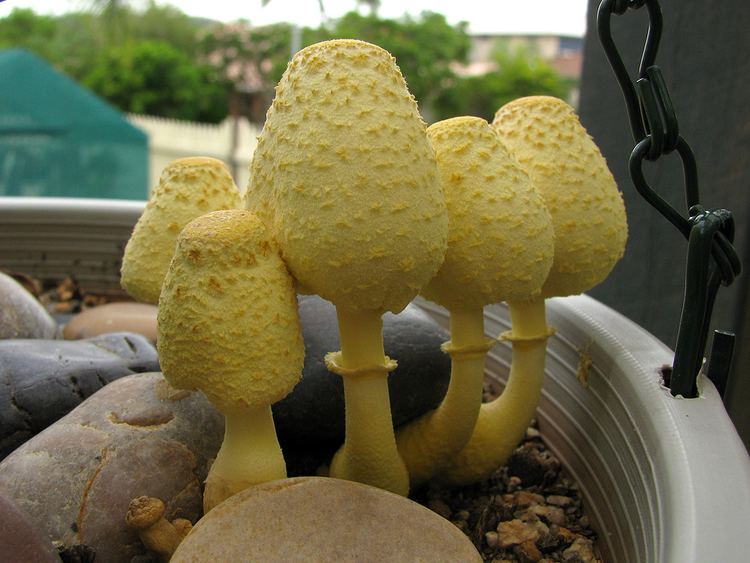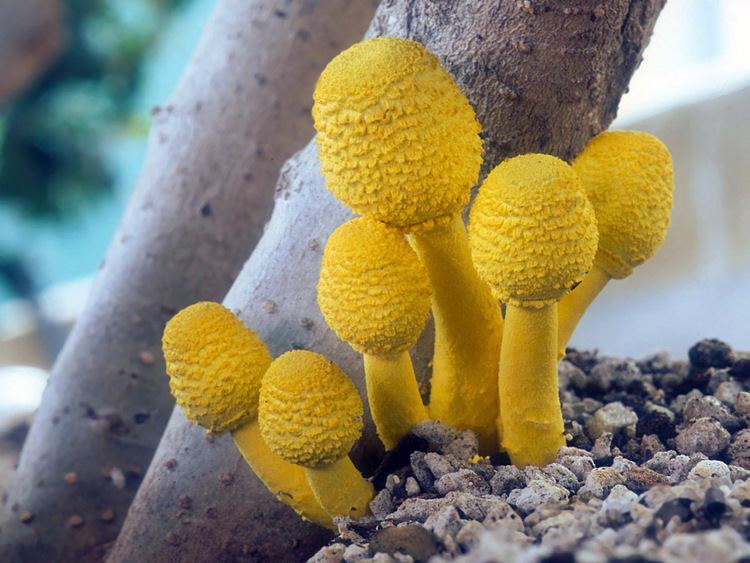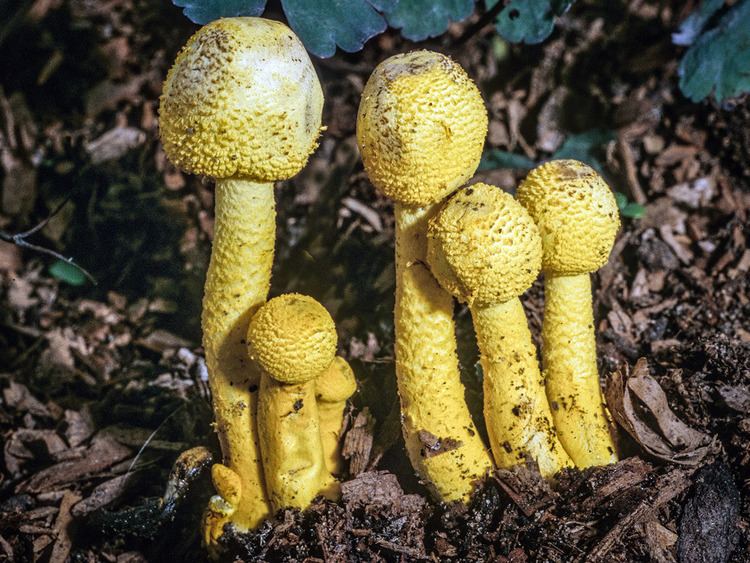Kingdom Fungi Family Agaricaceae | Division Basidiomycota Higher classification Leucocoprinus Order Agaricales | |
 | ||
Similar Leucocoprinus, Lepiota, Agaricaceae, Leucoagaricus, Leucocoprinus cepistipes | ||
Yellow potted plant mushroom yellow houseplant mushroom leucocoprinus birnbaumii aka lepiota lutea
Leucocoprinus birnbaumii is a species of gilled mushroom in the family Agaricaceae. It is common in the tropics and subtropics, but in temperate regions frequently occurs in greenhouses and flowerpots, hence its common names of flowerpot parasol and plantpot dapperling. The fruit bodies are poisonous, if consumed.
Contents
- Yellow potted plant mushroom yellow houseplant mushroom leucocoprinus birnbaumii aka lepiota lutea
- Leucocoprinus birnbaumii time lapse
- Taxonomy
- English names
- Description
- Similar species
- Habitat and distribution
- Chemistry
- References

Leucocoprinus birnbaumii time lapse
Taxonomy

The species was first published as Agaricus luteus by the English mycologist James Bolton who described and illustrated it from a hothouse near Halifax in 1785. Unfortunately, the name A. luteus had already been published for a different fungus, making Bolton's A. luteus illegitimate. Nonetheless, many popular North American books continued to use the name Lepiota lutea until the 1980s. In 1839 Czech mycologist August Corda described the same species from Prague where it was found growing in a greenhouse by a garden inspector named Birnbaum, hence the epithet birnbaumii.
English names

In the UK, Leucocoprinus birnbaumii has been given the recommended common name of "plantpot dapperling". In North America, it has also been called the "yellow parasol", "flowerpot parasol", "yellow houseplant mushroom", "lemon-yellow lepiota", or "yellow pleated parasol".
Description

Fruit bodies of Leucocoprinus birnbaumii are agaricoid (mushroom-shaped) and occur singly or in small clumps. All parts are bright, pale sulphur-yellow, but fade with age. When young, the cap is usually taller than broad, later becoming convex and around 20–60 mm (1–2.5 in) across. The cap surface is smooth but dotted with fine, easily detached scales, and often develops shallow, radial grooves near the margin. The gills are free (not attached to the stem) and are covered by a partial veil when young, which ruptures to leave a fragile, evanescent ring on the stem. Microscopically, the species is distinguished by its thick-walled, ellipsoid spores that are dextrinoid, have a germ pore, and measure around 8–12 by 5–9 μm.
Similar species

Leucocoprinus straminellus is a similar, slightly paler (sometimes entirely whitish) species that may also occasionally appear in hothouses and plantpots in temperate regions. It is best distinguished microscopically by its smaller spores that lack a germ pore. Leucocoprinus flavescens, described from North America, is also small-spored and has a yellowish cap with a brownish centre. Leucocoprinus sulphurellus is a yellow species that occurs in the Caribbean area, but has gills that bruise bright blue-green.
Habitat and distribution
Leucocoprinus birnbaumii, like other members of the Leucocoprinus genus, is a saprotrophic fungus, thriving on highly decomposed plant material such as humus or compost. This species is prevalent across tropical and subtropical regions, with its range extending into the warmer areas of temperate zones. Occasionally, it can appear in cooler regions, with documented occurrences as far north as England, though these are typically transient introductions. In temperate regions like North America, Europe, and Australia, it is more commonly encountered in greenhouses and indoor plant pots rather than in natural settings.
Chemistry
Fruit bodies of Leucocoprinus birnbaumii are poisonous if consumed, causing significant stomach problems.
The yellow color of the mushrooms is from alkaloids known as birnbaumins; whether these compounds are responsible for the mushroom's toxicity is unknown.
